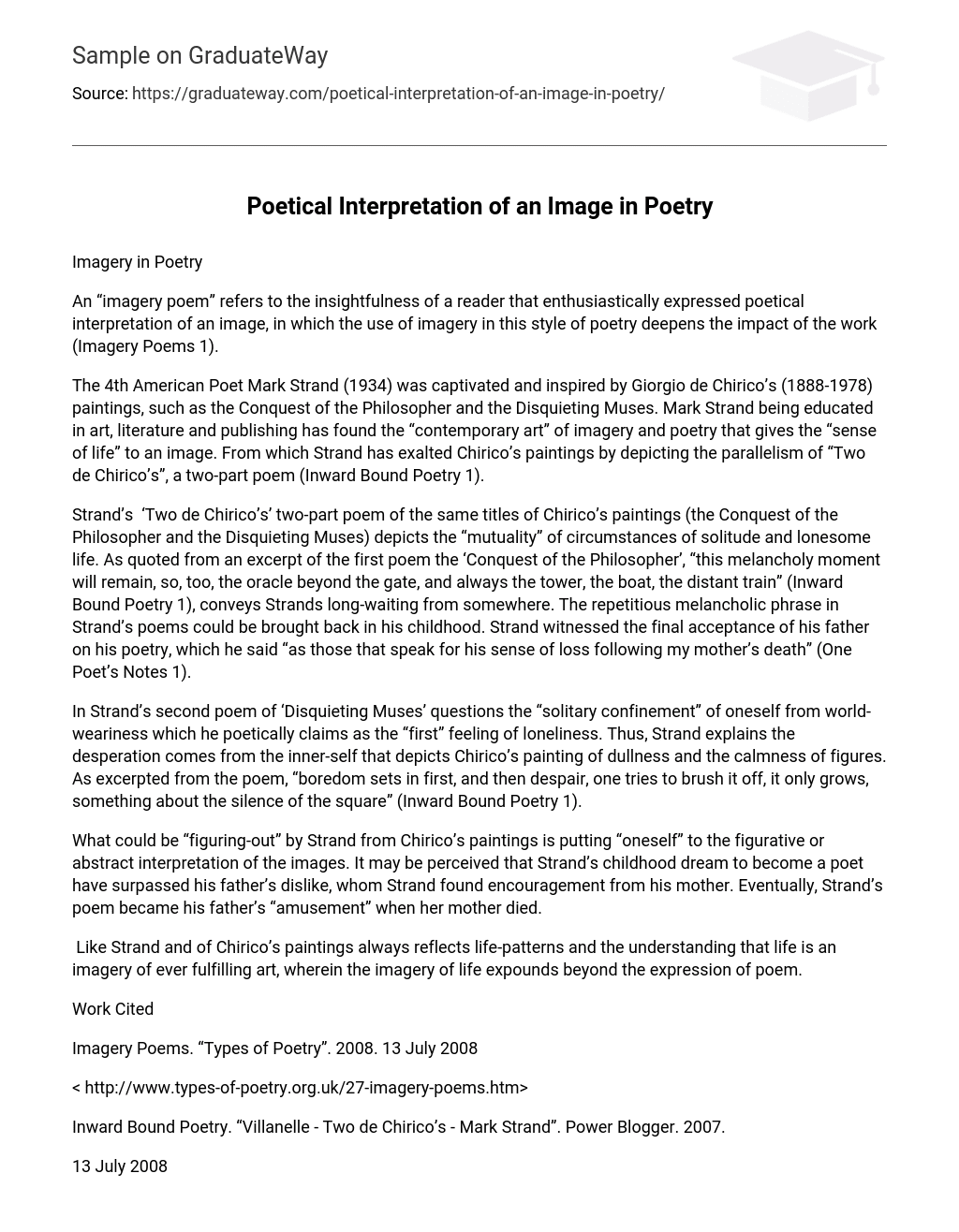Imagery in Poetry
An “imagery poem” refers to the insightfulness of a reader that enthusiastically expressed poetical interpretation of an image, in which the use of imagery in this style of poetry deepens the impact of the work (Imagery Poems 1).
The 4th American Poet Mark Strand (1934) was captivated and inspired by Giorgio de Chirico’s (1888-1978) paintings, such as the Conquest of the Philosopher and the Disquieting Muses. Mark Strand being educated in art, literature and publishing has found the “contemporary art” of imagery and poetry that gives the “sense of life” to an image. From which Strand has exalted Chirico’s paintings by depicting the parallelism of “Two de Chirico’s”, a two-part poem (Inward Bound Poetry 1).
Strand’s ‘Two de Chirico’s’ two-part poem of the same titles of Chirico’s paintings (the Conquest of the Philosopher and the Disquieting Muses) depicts the “mutuality” of circumstances of solitude and lonesome life. As quoted from an excerpt of the first poem the ‘Conquest of the Philosopher’, “this melancholy moment will remain, so, too, the oracle beyond the gate, and always the tower, the boat, the distant train” (Inward Bound Poetry 1), conveys Strands long-waiting from somewhere. The repetitious melancholic phrase in Strand’s poems could be brought back in his childhood. Strand witnessed the final acceptance of his father on his poetry, which he said “as those that speak for his sense of loss following my mother’s death” (One Poet’s Notes 1).
In Strand’s second poem of ‘Disquieting Muses’ questions the “solitary confinement” of oneself from world-weariness which he poetically claims as the “first” feeling of loneliness. Thus, Strand explains the desperation comes from the inner-self that depicts Chirico’s painting of dullness and the calmness of figures. As excerpted from the poem, “boredom sets in first, and then despair, one tries to brush it off, it only grows, something about the silence of the square” (Inward Bound Poetry 1).
What could be “figuring-out” by Strand from Chirico’s paintings is putting “oneself” to the figurative or abstract interpretation of the images. It may be perceived that Strand’s childhood dream to become a poet have surpassed his father’s dislike, whom Strand found encouragement from his mother. Eventually, Strand’s poem became his father’s “amusement” when her mother died.
Like Strand and of Chirico’s paintings always reflects life-patterns and the understanding that life is an imagery of ever fulfilling art, wherein the imagery of life expounds beyond the expression of poem.
Work Cited
Imagery Poems. “Types of Poetry”. 2008. 13 July 2008
< http://www.types-of-poetry.org.uk/27-imagery-poems.htm>
Inward Bound Poetry. “Villanelle – Two de Chirico’s – Mark Strand”. Power Blogger. 2007.
13 July 2008
< http://inwardboundpoetry.blogspot.com/2007/07/453-two-de-chiricos-mark-strand.html>
One Poet’s Notes. “Marking Mark Strand’s Birthday”. Valparaiso Poetry Review. 2008.
13 July 2008
< http://edwardbyrne.blogspot.com/2008/04/marking-mark-strands-birthday.html>





